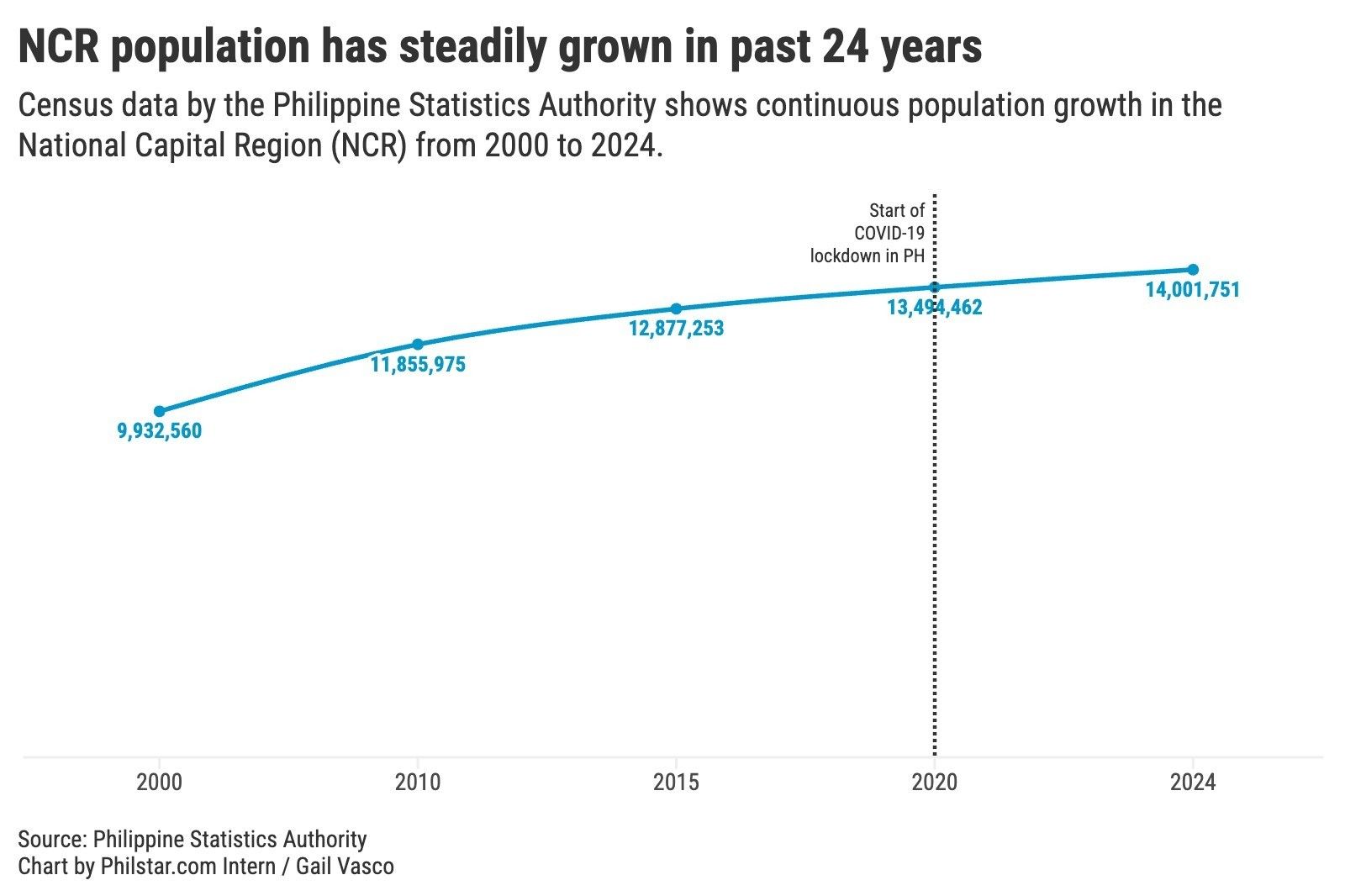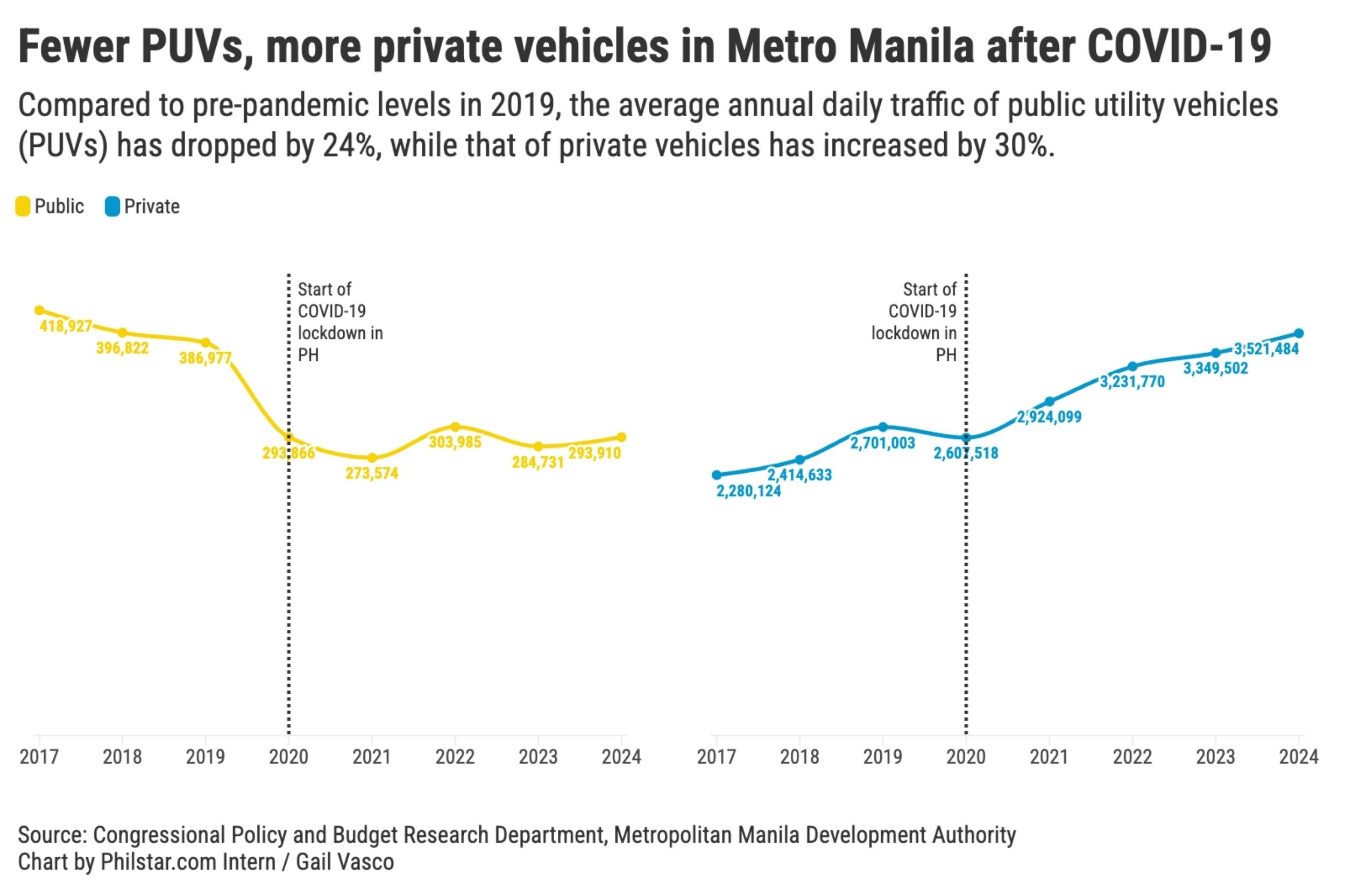
Upgrade to High-Speed Internet for only ₱1499/month!
Enjoy up to 100 Mbps fiber broadband, perfect for browsing, streaming, and gaming.
Visit Suniway.ph to learn
MANILA, Philippines — Long before the sun rises, government employee Hershey* is already out the door to commute from Caloocan City to Makati City.
By leaving around 5 a.m., she avoids Metro Manila’s morning rush and reaches her office by 7 a.m. Still, that’s two hours gone from her day.
The commute home, however, tells a different story.
Despite leaving the office as early as 4 p.m., she still endures long queues for the EDSA Bus Carousel. When she finally boards, the bus is often overcrowded, forcing her to stand shoulder-to-shoulder with other passengers just to get home by around 6 p.m.
The Land Transportation Franchising and Regulatory Board (LTFRB) recently warned that public utility vehicle (PUV) operators who exceed the allowable passenger capacity will be penalized with a P5,000 fine and could have their franchises revoked.
RELATED: LTFRB cracks down on ‘sardines-like’ crowding in PUVs
However, mobility advocacy group Move As One Coalition said in a statement that overloading in PUVs is a symptom of a “systemic shortage in public transportation supply,” driven by the LTFRB’s policies.
Shortage in PUVs
Hershey is just one of the millions of Filipinos who have to commute in Metro Manila, which falls behind at 63 out of 70 major cities in delivering public transportation services, according to the 2024 Urban Mobility Readiness Index.
She commutes in the nation’s capital four times a week, walking thousands of steps in uneven pathways, climbing heights of footbridges and putting herself in safety hazards — just so she can travel a few kilometers in the city.
The Philippine Development Plan (PDP) for 2023-2028 acknowledges the poor state of mobility in the Philippines, identifying the lack of public transport as a reason why commuters suffer long waits and overloaded PUVs.
As early as 2021, Move As One Coalition reported that the COVID-19 pandemic worsened the already insufficient mass transportation system in the country.
Robert Siy, urban planner and co-convenor of Move As One Coalition, described the current public transportation situation as a “downward spiral,” where the number of PUVs continues to shrink while the use of private vehicles increases.
“More and more people experienced difficulty. Some routes totally disappeared. … They restricted their mobility activities,” Siy said in an interview with Philstar.com.
Hershey shared that she finds the current public transport system in the Philippines “unsatisfactory,” because of her personal experience commuting in Metro Manila.
“Now, it is not satisfactory because everyone is having a hard time. Then, [we are] forced to book in [ride-hailing applications] that are too expensive because transportation in Metro Manila is unreliable,” Hershey told Philstar.com.
The demand for public transportation in the National Capital Region (NCR) has increased post-pandemic as the region’s population rose by 507,289 in 2024, according to the Philippine Statistics Authority (PSA). However, the number of PUVs has yet to catch up.

PSA data shows steady growth in Metro Manila's population.
Philstar.com / Gail Vasco, intern
Despite the growing population, the Metropolitan Manila Development Authority (MMDA) recorded a 24% decline in PUVs and a 30% rise in private vehicles traveling in NCR daily from 2019 to 2024. This demonstrates how PUVs did not even return to pre-pandemic numbers.

Despite a growing population, there have been fewer public utility vehicles and more private vehicles in Metro Manila roads.
Philstar.com / Gail Vasco, intern
According to the IBON Foundation, 651 out of 900 jeepney routes in the Greater Manila Area have reopened after the COVID-19 pandemic. However, 49,959 traditional jeepneys are still operating out of the 74,000 recorded prior to the lockdown.
“If supply is constricted, it may be good for the operators, but it is definitely bad for the commuters. It is bad for the general public,” Siy explained.
LTFRB reform
The coalition criticized the LTFRB’s “Anti-Sardinas” policy for not addressing the real problem of PUV shortage caused by the agency’s policies from 1994 to 2017.
They said that the LTFRB’s moratoriums and PUV Modernization Program have contributed to the decline of PUVs in Metro Manila, citing an analysis by Cristina Research Foundation Chair Victor Limlingan.
The LTFRB first suspended the acceptance of new franchise applications of PUVs and public utility jeepneys (PUJ) in the country in 1994 due to the “considerable number” of mass transportation veehicles, but the moratorium was lifted a year later when public transport suffered a shortage.
The agency later issued an inter-regional PUJ moratorium in 2001 and a nationwide suspension of PUV franchise applications in 2003. The moratoriums were all lifted in 2017.
RELATED: Moratorium on new PUV franchises lifted
Siy believes the LTFRB is at fault for the PUV shortage, but what’s worse, he said, is how the agency “never tried” to solve the problem.
“The LTFRB unfortunately, does not see itself as being responsible for addressing any travel need or deficiency. So, what is evidence of this? They don't even measure any deficit in public transportation needs,” he said.
The coalition called for the immediate repeal of the agency’s moratorium on the issuance of franchises for high-demand routes to increase the supply of PUVs in commuter-rich areas.
However, Siy said that lifting the moratorium is only a short-term solution. He suggested reforming the LTFRB itself as the long-term solution.
“LTFRB is one of the institutions that is outdated and needs to be actually reformed. … It’s very much in need of reform, to amend its role and the way it interacts with the industry and the general public,” he said.
The agency regulates and franchises PUVs nationwide, but Siy proposed that the reform must decentralize its powers to local government units (LGU) in issuing franchises to PUVs and identifying public transportation routes.
“LTFRB lacks the capacity and local knowledge to manage franchising in every single LGU. It is not, I would say, humanly possible for an agency to take on that function,” he said.
Prioritizing commuter needs
The PDP has laid out the following strategies to address the public transportation crisis:
- Formulation of the National Transportation Master Plan
- Construction and upgrade of intermodal transport facilities
- Development of active transport networks and mass transportation systems
It also designated the Department of Transportation (DOTr) and Department of Public Works and Highways (DPWH) as agencies responsible for the creation of the National Transportation Policy Act and Magna Carta for Commuters, which has been pending in Congress for the past years.
RELATED: 'People are suffering': House transportation panel tackles commuters' rights bill
According to mobility expert Benjamin de la Peña, the Philippines lacks “clear” public transportation policies.
“We don’t have clear public transportation policies. We have very lofty [and] ambitious statements, but we are terrible in terms of implementation,” de la Peña said in an interview with Philstar.com.
He stressed the need for a national commuter survey to assess the experiences of commuters, and not just traffic volume.
“Because we’re not measuring the experience of the commuter, we are not solving their problems. We’re solving spot problems,” he said.
Hershey wishes that the government would prioritize making roads and public transportation safer in the country.
“I hope cities and the officials of DPWH and DOTr can upgrade the roads in the country because that is one of the struggles of commuters, especially narrow sidewalks where people can be hit [by vehicles],” she said in Filipino.
Move As One Coalition also urged the LTFRB and the DOTr to base franchise decisions on commuter data from population assessments, camera-based systems, cashless fare collection systems and consultations with public transport workers and commuters.
For commuters like Hershey, the only option is to leave home before dawn so they can arrive at work on time and endure the packed aisles of the EDSA Carousel on the way home.
“I hope that the government can improve in implementing policies about transportation so commuters have an easier experience, because not everyone owns a car they can bring to work,” Hershey added.
--
*Her real name has been withheld and replaced with Hershey at her request for privacy.
Lex Culla and Gail Vasco are interns at Philstar.com.

 16 hours ago
1
16 hours ago
1



